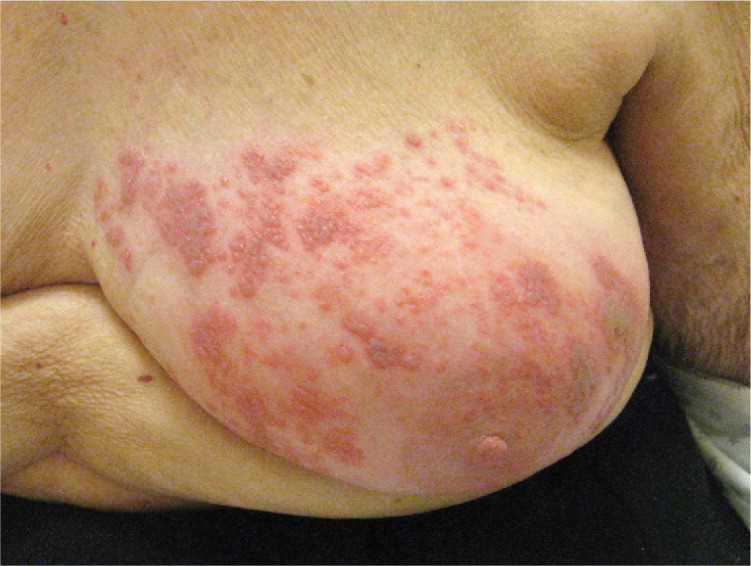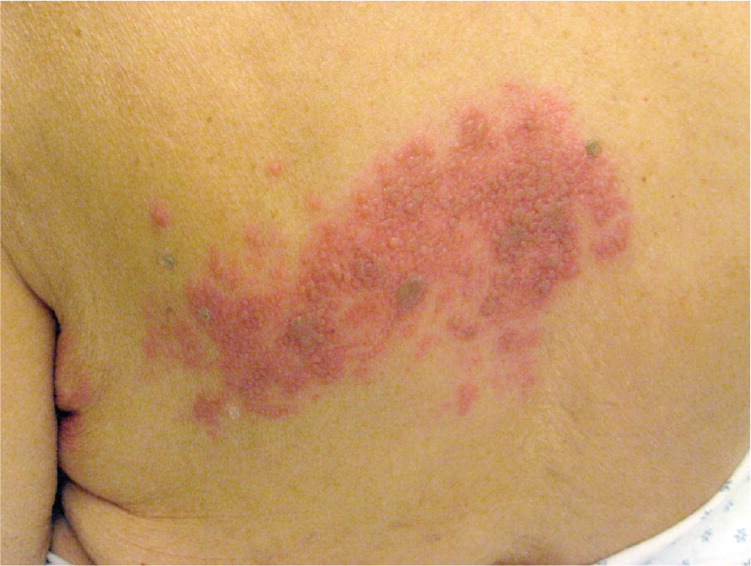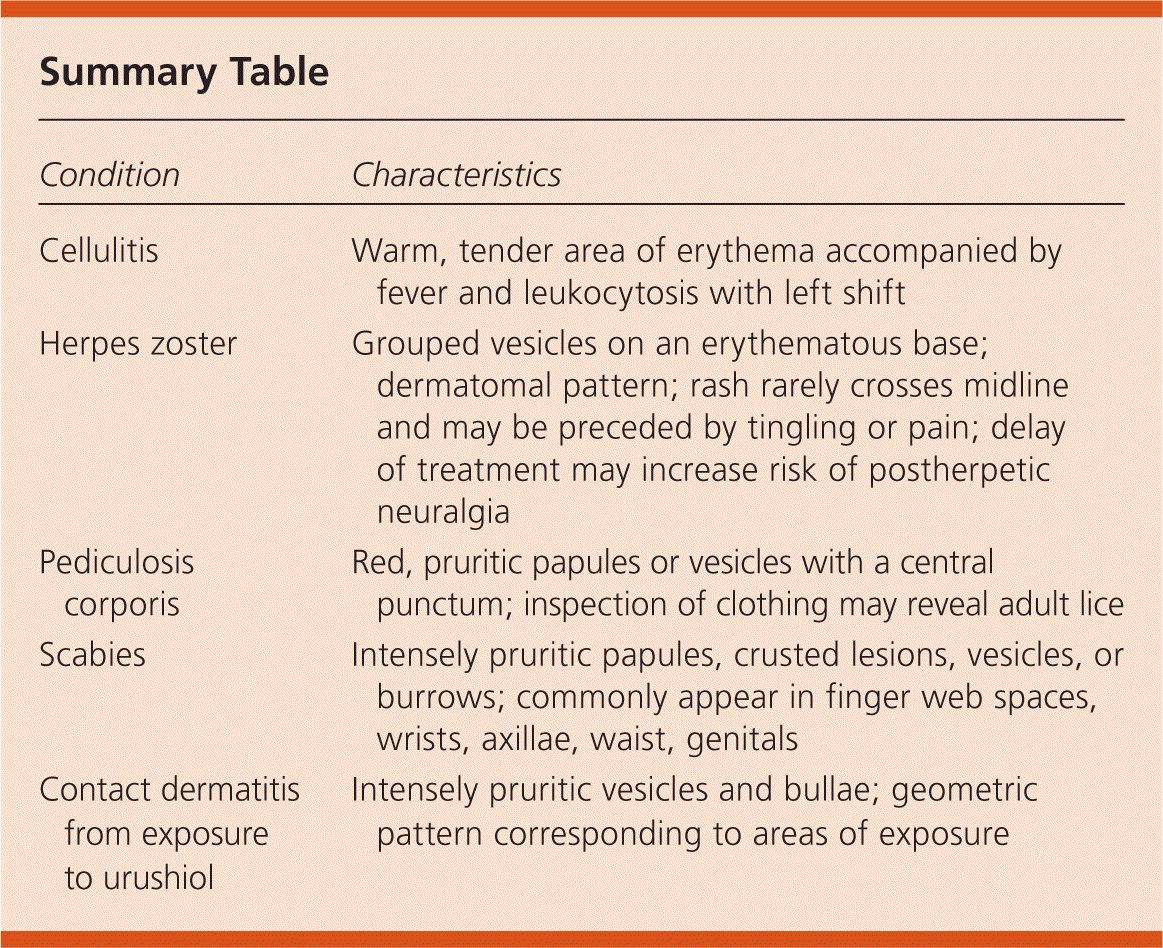
Am Fam Physician. 2010;82(7):815-816
Author disclosure: Nothing to disclose.
An 87-year-old woman presented with a mildly painful, nonpruritic rash that appeared one day earlier and was preceded by a tingling sensation. Her hobbies included gardening. No other residents at her nursing home had a similar rash. Physical examination revealed an erythematous rash on the left axilla, breast (Figure 1), and back (Figure 2).


Question
Discussion
The answer is B: herpes zoster. Herpes zoster is caused by the reactivation of the varicella zoster virus and commonly occurs in persons who are older or immunocompromised.1 The diagnosis is made clinically, although laboratory testing (e.g., Tzanck smear, direct fluorescent antibodies, viral culture, serology, polymerase chain reaction) may be used to confirm the diagnosis. Treatment with an antiviral agent (valacyclovir [Valtrex] or acyclovir [Zovirax]) should not be delayed while awaiting laboratory confirmation if the clinical suspicion for herpes zoster is high. Possible complications of herpes zoster include postherpetic neuralgia, secondary infection, and central nervous system or visceral involvement.
History and physical examination findings are key in correctly diagnosing herpes zoster. The rash is often preceded by tingling or pain. The dermatomal pattern of the rash, which rarely crosses the midline, is a defining feature of the condition.
Cellulitis usually appears as a warm, tender area of erythema and is accompanied by a fever and leukocytosis with left shift. If present, intense edema may lead to focal blistering, but not a clustering of vesicles as with herpes zoster.
The classic lesions of pediculosis corporis (human body louse) are red, pruritic papules or vesicles with a central punctum. They are often clustered, but do not follow a dermatomal pattern. Inspection of the patient's clothing may reveal adult lice.
The primary lesions of scabies may appear as papules, crusted lesions, vesicles, or burrows. The lesions are intensely pruritic; often generalized; and commonly appear in the finger web spaces, wrists, waist, axillae, and genitals.
Contact dermatitis from exposure to urushiol (oil in the leaves of the poison ivy plant) may produce a rash similar to that from herpes zoster. Although the patient's hobby of gardening increases her risk of exposure to poison ivy, the rash would be intensely pruritic and in a geometric pattern corresponding to the areas of exposure.

| Condition | Characteristics |
|---|---|
| Cellulitis | Warm, tender area of erythema accompanied by fever and leukocytosis with left shift |
| Herpes zoster | Grouped vesicles on an erythematous base; dermatomal pattern; rash rarely crosses midline and may be preceded by tingling or pain; delay of treatment may increase risk of postherpetic neuralgia |
| Pediculosis corporis | Red, pruritic papules or vesicles with a central punctum; inspection of clothing may reveal adult lice |
| Scabies | Intensely pruritic papules, crusted lesions, vesicles, or burrows; commonly appear in finger web spaces, wrists, axillae, waist, genitals |
| Contact dermatitis from exposure to urushiol | Intensely pruritic vesicles and bullae; geometric pattern corresponding to areas of exposure |
